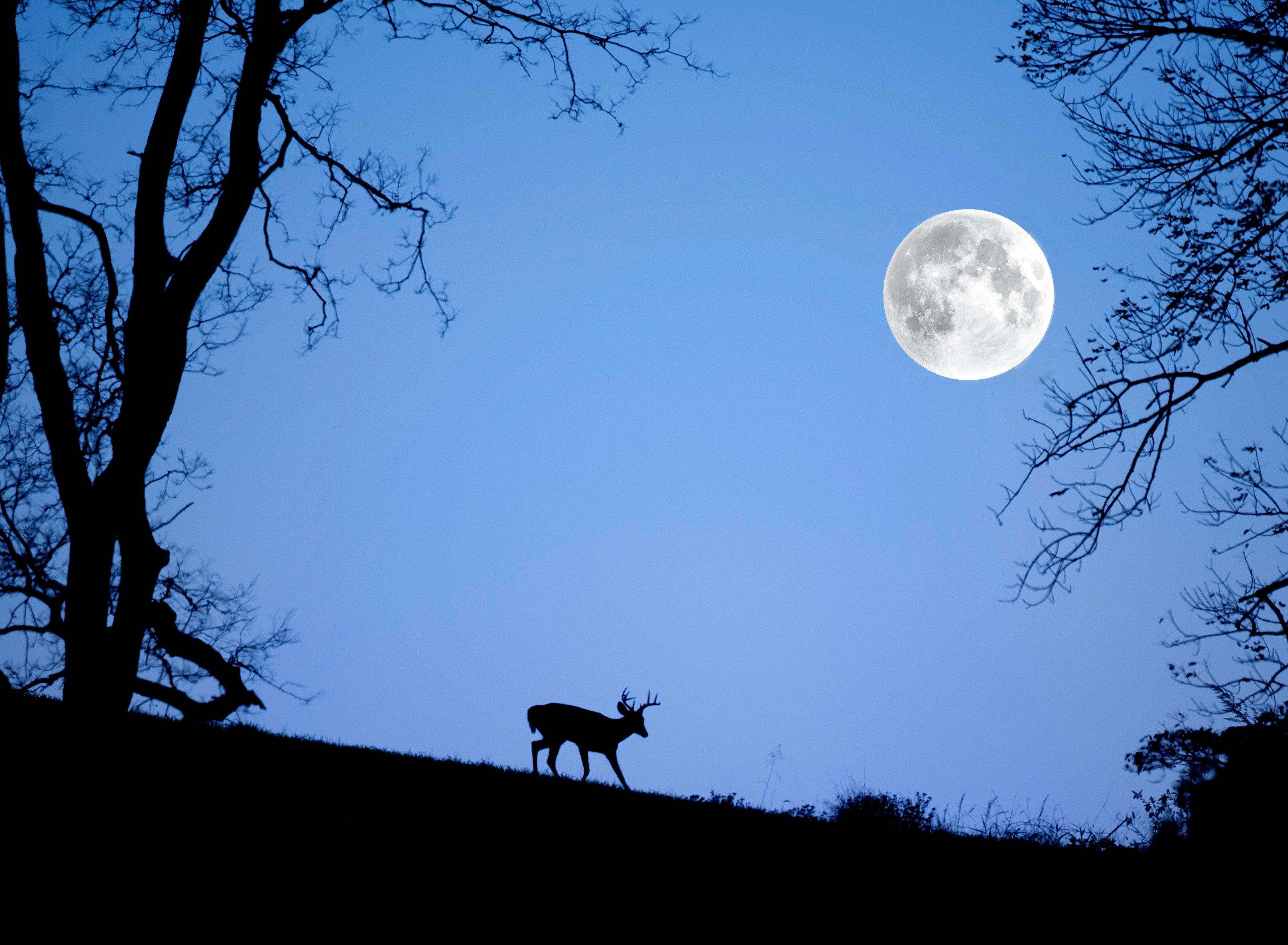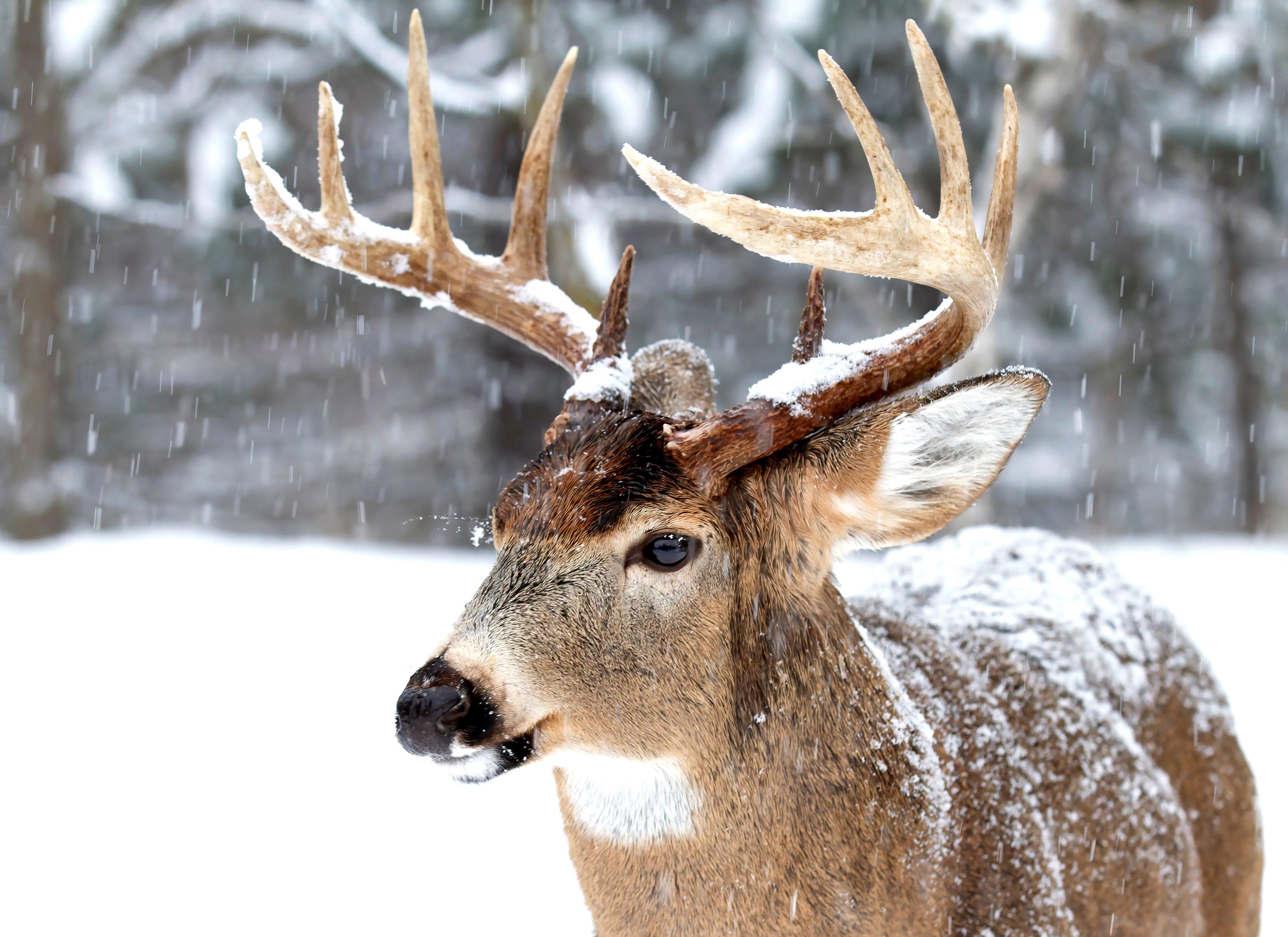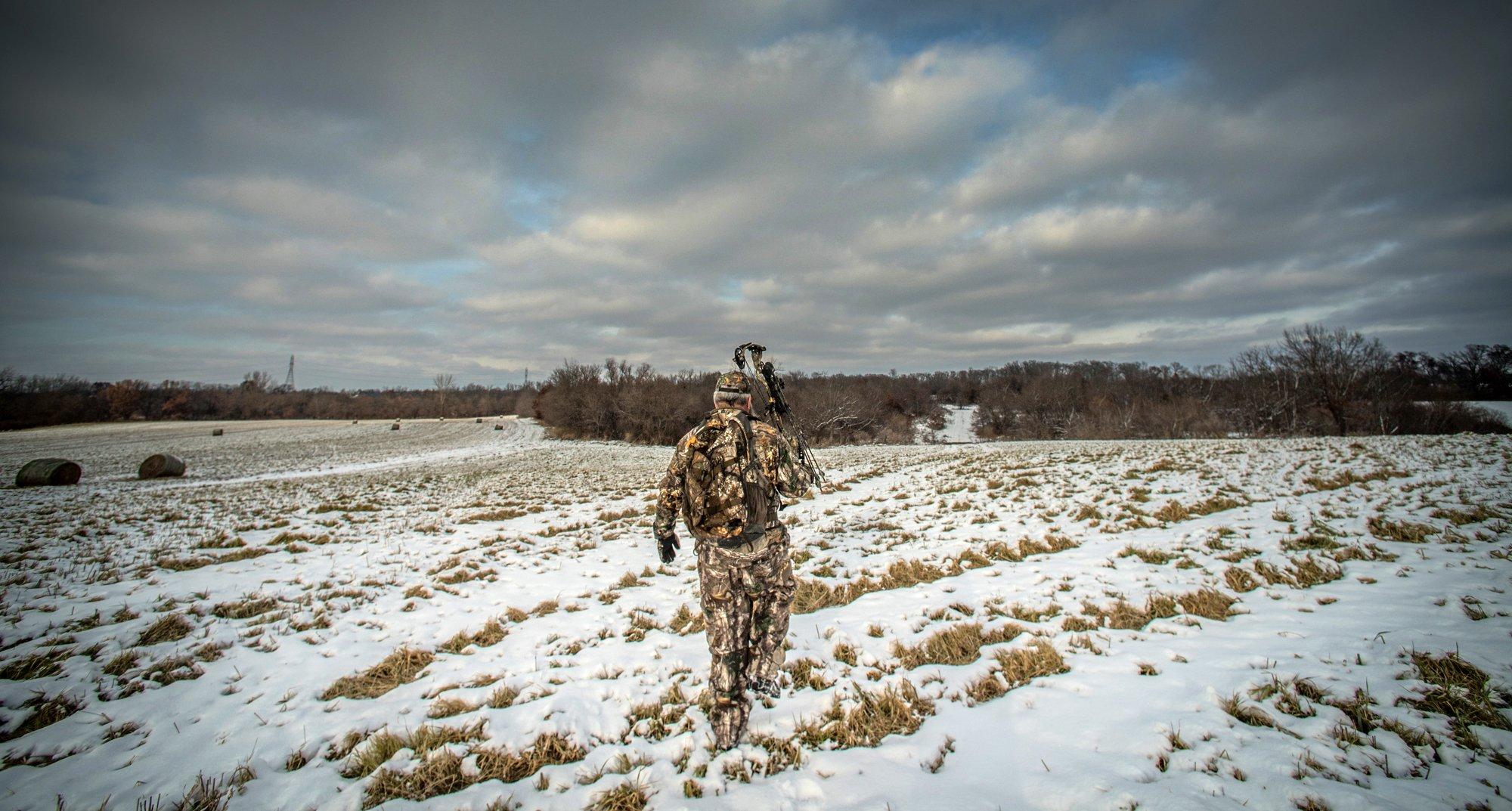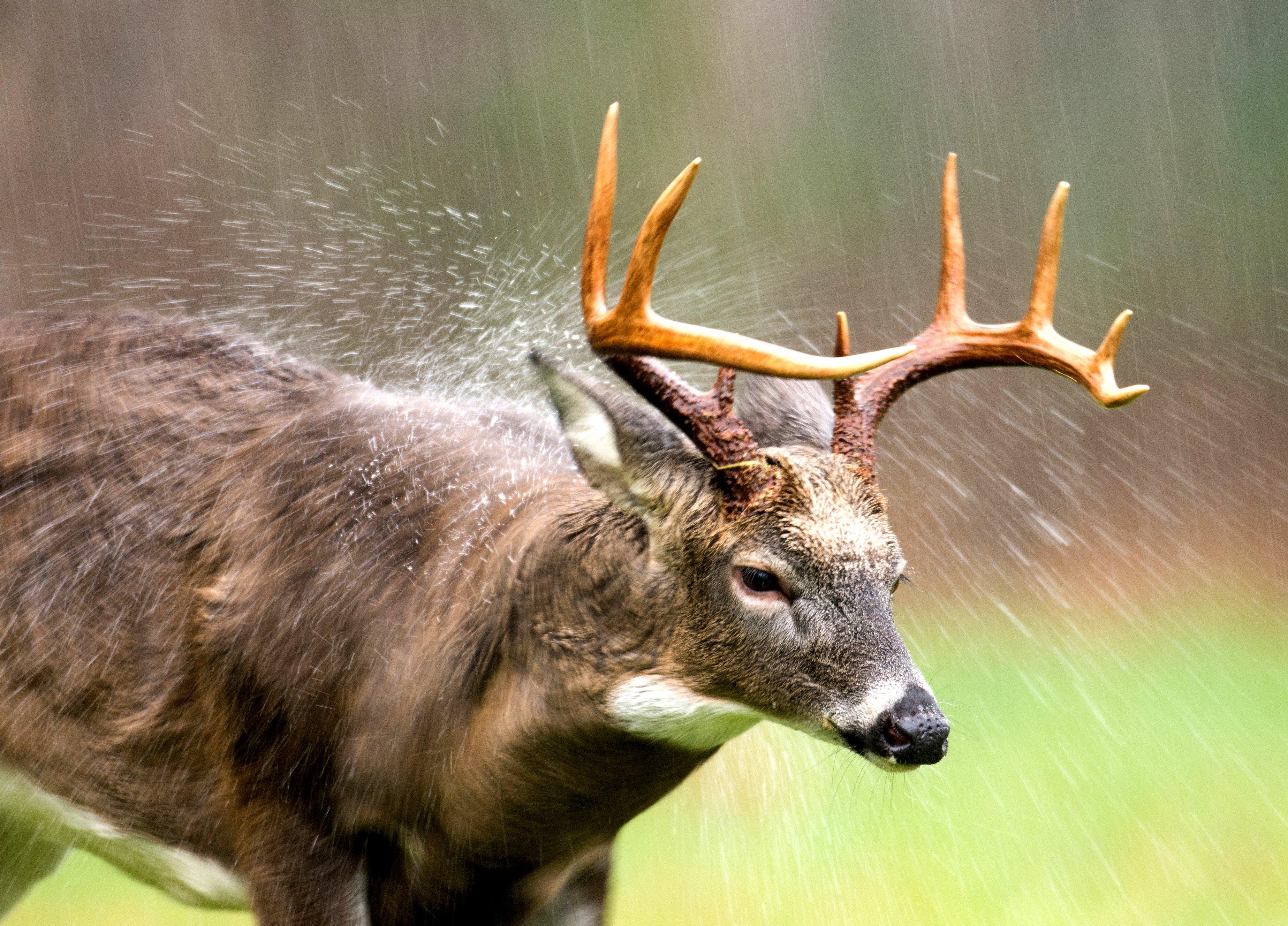
After years of experience, the author believes a full moon spurs midday deer movement. Image by Bill Konway and Ray Hennessy
Most every deer hunter I know believes the weather affects the movement of whitetails, and mature bucks in particular. But is it so?
Most every deer biologist I know believes the moon does not influence how bucks move and rut. Is that so?
Having hunted and observed big deer for a living for the last 35 years, having spent some 3,000 days in tree stands and box blinds in more than 30 states and four Canadian provinces, I will tell you what I believe, and know, about both these theories.

Do cold fronts really get deer up and moving? The author thinks they do. Image by Jim Cumming
Cold Fronts are Still the Best
Hot weather is no good, we need cold temperatures for bucks to move. This simple premise has been so embedded in the deer hunter’s psyche for decades that I never thought it necessary to discuss the weather to any serious degree in my hunting articles and blogs, or on my television show.
But a few years ago, some scientists and deer experts, many of whom I know and greatly respect, started floating the alternative theory that there is no strong or consistent correlation between deer movement and air temperature. In their view, bucks are apt to move similarly during hot or cold weather. Cold fronts don’t matter. One well-known biologist said, “I can’t find any compelling evidence that’s going to make me go hunt by looking at the forecast or the barometer.”
This got me to thinking, and even second-guessing myself, so I went back through my decades of notes and journal entries to see if I could discern a strong and consistent correlation between the weather and buck movement. It didn’t take long to uncover this simple yet reassuring thread: On cool days in October and November, I see, on a daily average, nearly twice as many deer on their feet than on warm-weather hunts. Seventy-five percent of the mature bucks I’ve shot (150-class and up) have been on days when the temperature stayed at or below 50 and the barometric pressure is 29.9 inches and rising.
A cold front that blows in from the west or north and drops the temperature 10, 20, or maybe even 30 degrees brings with it your best chance to punch a buck tag regardless of where you hunt in America. As a front passes and the air cools and dries and high pressure builds in, do not miss the next two or three days in one of your best stands. Bucks feel good and frisky, and they get up and move. In October, I recommend afternoon stands near fields, plots, or acorns. As the rut comes on in November, focus on morning hunts deeper in the timber.
While I’ll put money on cool, clear days, mature bucks are wildly unpredictable, and so there are exceptions. I’ve sat from dawn to dusk for 10 cold days straight in the big-buck timber of Saskatchewan and never seen a shooter. Last season in Kansas, on one of the worse weather afternoons of the season (65 degrees and humid with howling 30 mph south winds) I shot a 160-inch 12-pointer. Hunt when you can, but bank on cold fronts and the following crisp days.
Don’t Miss: IS THE SOUTH THE COUNTRY’S NEW BIG BUCK BELT?

When the weather is right, best be in the field. Image by Bill Konway
Hunt the Rutting Moon
Thick antler flashed in the spruce, and then a massive deer appeared. I leveled my .30-06 and pressed the trigger, the concussion of the shot deafening in the Canadian stillness. I walked to the buck and wrapped my hands around the wonderful antlers, tall and heavy. I pushed up my sleeve and checked my watch: 1:28 p.m. He was the fifth buck that scores more than 160 inches that I have shot between noon and 2:30 pm during a “rutting” full moon.
For the last 20 years I have not missed a season where I didn’t hunt long and hard around and during the rutting full moon, which comes on sometimes in late October but most often in early or mid-November. Beneath this bright orb I have experienced flurries of increased buck movement, both on trail camera at night and, better, from a stand during daylight hours.
For millions of you, this goes totally against what your Grandaddy or other mentor told you: Boy, that full moon is the worst, deer are up feeding all night! I hate to disagree with Pops, but he’s wrong on this one. And while there are many skeptics, there is one bit of science that supports my position.
Several years ago, a study at North Carolina State University examined lunar influence on whitetail movement. A team of researchers tracked GPS-collared deer throughout the moon phases, and analyzed text messages sent from the collars to determine how and when the animals moved the most.
Whitetail deer are crepuscular animals, meaning they are most active at dawn and dusk, regardless of weather, moon phase or any other environmental factor. The researchers’ data showed that fact did not change, but the timing and intensity of deer movement within each moon phase did change slightly.
Don’t Miss: HOW TO READ DEER SIGN LIKE THE PROS

If you monitor the moon, you just might see some correlation with deer movement. Image by Korionov
As for the full moon, the NC State study confirms my best hypothesis. “A common misconception is that deer can see better at night because it’s brighter when the moon is full,” the researchers said. “But according to our data they move less on average at night during a full moon and more during the middle of the day.”
That’s why during a full moon in late October or November, I sometimes don’t climb into my best stand until 9 am or so. That way I have the fortitude to hang on post during the prime midmorning and middy hours, and hunt it out till dark.
I love hunting not only during the full moon phase, but also the three to five days that precede it, and the five days that follow. On the waxing gibbous days that build up to the big moon, as illumination increases, I focus on afternoon hunts around fields and food plots. With the moon rising and often visible until about 5 p.m., deer movement is typically good.
As the moon fades to the waning gibbous days after full illumination, when the moon is visibly setting, the best deer activity generally switches over to mornings, so I head to stands back in the timber near travel corridors and bedding areas.
This season the rutting moon goes full on October 28. I predict good to great deer movement October 24 to November 4. This is one of my favorite windows to bow hunt any year, and made better by the early rutting moon this season.
I expect the full illumination to kick some mature bucks into scraping and prowling with vigor during the last week of October, and I believe they will seek does hard the first week of November. Try rattling and grunting from a morning stand back in the timber.
Don’t Miss: HOW FAR DID THAT BUCK TRAVEL?

A cold front that blows in from the north and drops the temperature 10 to 20 degrees, usually following a heavy rain, is a recipe for getting deer moving wherever you’re hunting. Image by Tony Campbell
Last Word
Weather, barometer, moon phase. Each condition on its own can trigger or suppress deer activity. It’s when they work together that they have the most noticeable effect.
When daytime and night temperatures are unseasonably warm in late October and November, a very common occurrence in many regions these days, the heat can and often will suppress any noticeable effect of the full moon on deer movement. It’s when temperatures are seasonal or, better yet, 10 to 25 degrees cooler than normal on the backside of a front that the big moon can give you an advantage.
Don’t Miss: 81 WAYS TO FAIL AT DEER HUNTING












